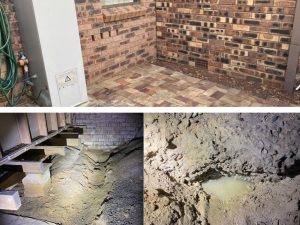
With the rise of DIY culture and the abundance of online tutorials, many homeowners and property buyers are tempted to perform their own inspections. While the idea of saving money and taking control may seem appealing, it’s important to recognize the hidden dangers associated with DIY inspections.
1. Limited Knowledge and Experience
One of the primary dangers of DIY inspections is the lack of comprehensive knowledge and experience in assessing the various aspects of a property. Professionals undergo rigorous training and have years of experience, enabling them to identify potential issues that may be overlooked by an untrained eye.
Professional inspectors are well-versed in building codes, construction standards, and common problem areas. They have a keen understanding of what to look for and the expertise to accurately interpret the findings. Relying solely on DIY inspections increases the risk of missing crucial details, resulting in unforeseen problems and costly repairs down the line.
2. Inadequate Tools and Equipment
Another significant limitation of DIY inspections is the lack of specialized tools and equipment required for a thorough assessment. Professional inspectors invest in high-quality tools that aid in detecting hidden issues, such as moisture meters, thermal imaging cameras, and radon detection devices.
These tools enable professionals to uncover problems that may not be visible to the naked eye. By attempting a DIY inspection without access to such equipment, you may miss underlying issues and compromise the accuracy and reliability of your assessment.
3. Emotional Bias and Lack of Objectivity
When it comes to inspecting a property, it’s important to maintain objectivity. DIY inspections often suffer from emotional bias, particularly when the property belongs to the inspector or is of personal significance. Emotional attachment can cloud judgment and lead to overlooking or downplaying potential problems.
Professional inspectors, on the other hand, approach inspections with a neutral perspective. Their primary concern is to provide an unbiased evaluation of the property’s condition, without any emotional attachments or vested interests. This impartiality ensures a thorough and accurate assessment, safeguarding your interests as a buyer or seller.
4. Legal and Compliance Issues
Conducting DIY inspections may lead to legal and compliance issues. Building codes, regulations, and safety standards can vary significantly between regions and evolve over time. Without up-to-date knowledge, you may inadvertently overlook compliance issues, exposing yourself to legal liabilities.
Professional inspectors stay well-informed of the latest regulations and ensure that the property meets the necessary requirements. They can identify safety hazards, code violations, and other potential legal issues, allowing you to address them proactively.
___
While the allure of DIY inspections may be tempting, it’s crucial to recognize the hidden dangers associated with this approach. By attempting inspections without the necessary knowledge, experience, tools, and objectivity, you run the risk of overlooking critical issues and making costly mistakes.
Investing in one of our professional expertise provides numerous advantages. Our inspectors bring their in-depth knowledge, experience, specialized tools, and unbiased perspective to the table, ensuring a comprehensive evaluation of the property. Their expertise minimizes the risk of hidden dangers going unnoticed and empowers you to make informed decisions about buying, selling, or maintaining a property.
Remember, a professional inspection is a small investment compared to the potential consequences of unidentified issues. Prioritize your safety, financial well-being, and peace of mind by entrusting inspections to our qualified professionals who can provide you with a thorough and accurate assessment.




